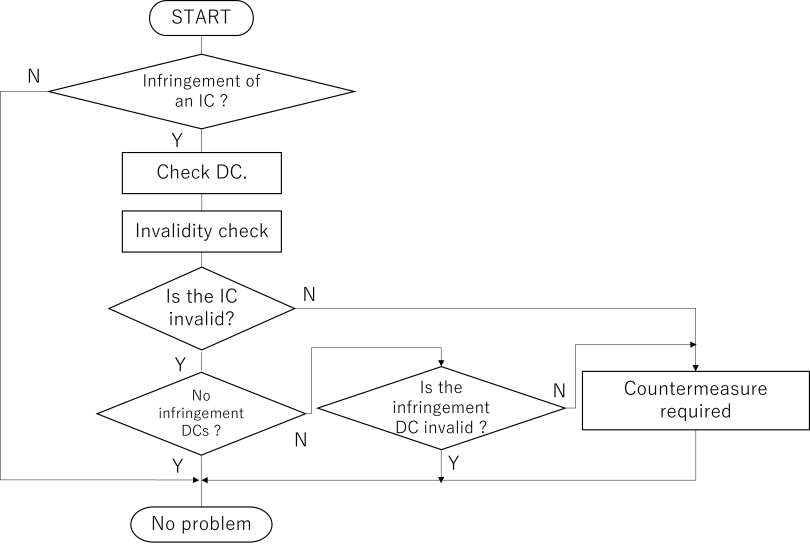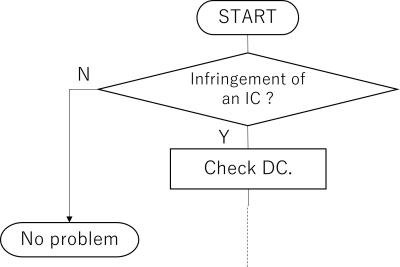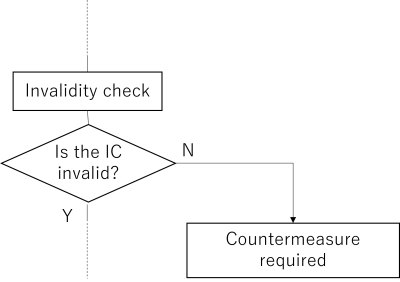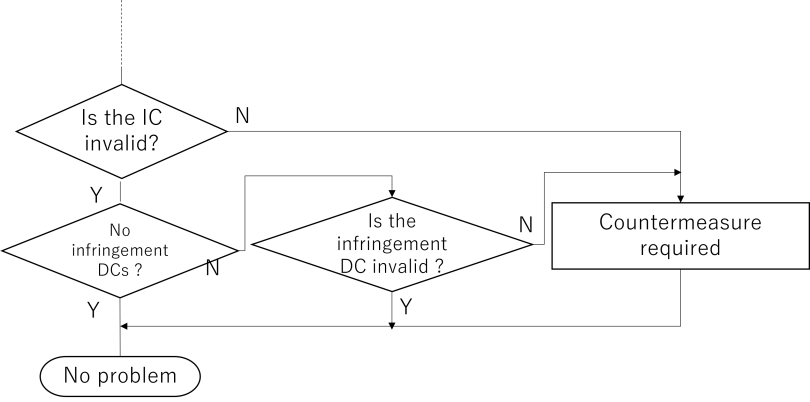When your product is completely covered by the claims of another company's patent, it is patent infringement.
Claims have an independent claim (IC) and a dependent claim (DC).
Dependent claims are independent claims with additional elements (limitations).
The scope of right in a dependent claim is therefore narrower than the scope of right in an independent claim (* there are very rare exceptions, but these are rare and are not considered below).
The narrower the scope of rights, the harder it is to invalidate, so dependent claims are harder to invalidate than independent claims.
Wideness of scope of rights : independent claims > dependent claims
Difficulty of invalidation : independent claims < dependent claims

In the following, the explanation is given on the defence side of patent infringement, but the basic flow is the same on the offender's side.
Suppose that Company D (the company: the defender) is concerned that its product CD may infringe the patent PA of Company A (the other company: the offender).
The flowchart below shows the flow of the examining process by Company D in this case.

A patent PA contains several claims.
Since the claims of a patent PA are, so to speak, ‘enemy ammunition’, they are considered from two angles: direct hit possibility (can it hit) and counterattack possibility (can it be crushed).
Could the opponent's patent be a direct hit?
First, consider whether the product CD is within the scope of right of the independent claim, or, in other words, whether the independent claim strikes the product CD.
Whether or not the product CD is within the scope of the rights of the independent claim is determined on the basis of the all-element rule and, if necessary, by taking into account legal principles such as the doctrine of equivalents.

If the independent claim does not directly strike the product, it is not an infringement of the patent and the consideration is complete.
Dependent claims have a narrower scope of rights than independent claim, so if there is no patent infringement with respect to the independent claim, there is no need to consider the dependent claim.
No risk as long as the independent claim does not directly hit the product.
When an independent claim is infringing, dependent claims are also considered.
Note any dependent claims that are infringing.
The wider the scope of rights, the more likely it is to be directly hit (infringed), and the narrower the scope of rights, the less likely it is to be directly hit (infringed).
Hereinafter, claims that are infringing are referred to as “infringement claims“.
Among infringement claims, dependent claims that are infringing are referred to as “infringement dependent claims“.
Infringement claims are dangerous because they can attack the product CD.
Therefore, we next proceed to consider whether the infringement claims can be invalidated (counterattacked).
Could the opponent's patents be counterattacked?
First, look for prior arts that disclose the same content as the infringement claim.

Examiners do not search the world's technical literature exhaustively. Therefore, if you search hard enough, you may find prior art.
If you can find prior art, the infringment claim will be invalidated.
In other words, the counterattack is successful.
First, consider whether the independent claim can be invalidated.
If even the independent claim cannot be invalidated (not counterattacked), then other countermeasures must be considered.

If the independent claim can be invalidated and there are no infringement dependent claims, the risk of infringement is eliminated and the investigation is complete.
Even if there are infringement dependent claims, if all infringement dependent claims can be invalidated, then the risk of infringement is also eliminated.
Even if the independent claims can be invalidated, if there are still infringing dependent claims that cannot be invalidated, then countermeasures need to be considered.
In summary,
If all infringement claims can be counterattacked, there is no risk.
If all infringement claims cannot be counterattacked, there is risk.
The wider the scope of the infringement claim, the easier it is to counterattack (invalidate), and the narrower the scope of the infringement claim, the harder it is to counterattack (invalidate).
Considering Infringement Countermeasures
When there are infringement claims (direct hits) and not all of the infringement claims can be invalidated (counterattacked), countermeasures such as design changes and license negotiations are necessary.
For the party enforcing its rights (the offender), the key point is not only the independent claim, but also the number of dependent claims that bring the other party's product within range.
When the number of infringement claims is large, the burden on the defending party to invalidate the infringement claims becomes heavy.
The greater the number of infringement claims, the stronger the attacker's bargaining power.
When multiple patents can be enforced as a set, the attacker's bargaining power is even stronger.